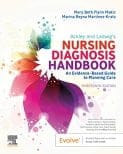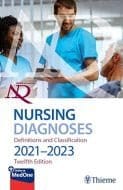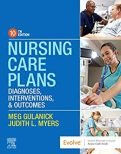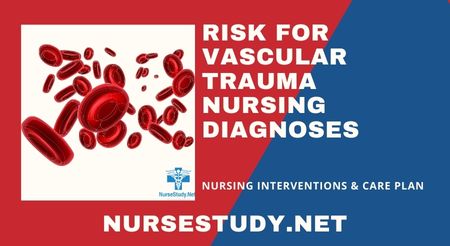Nanda Nursing Definition: Risk for Vascular Trauma is a nursing diagnosis that refers to the vulnerability of an individual to injury or damage to the blood vessels, which can result in compromised blood flow and potential complications.
Defining Characteristics:
The defining characteristics of Risk for Vascular Trauma may include:
Subjective:
- History of trauma or injury to the vascular system
- Presence of underlying conditions that increase the risk of vascular damage (e.g., hypertension, atherosclerosis)
- Use of medications that affect blood clotting (e.g., anticoagulants)
Objective:
- Fragile or easily bruised skin
- Presence of visible varicose veins
- Prolonged bleeding from minor cuts or injuries
- High blood pressure readings
- Signs of poor circulation (e.g., cold extremities, cyanosis)
- Swelling or edema in the extremities
Related Factors:
The risk factors that contribute to the development of Vascular Trauma may include:
- History of trauma or injury to the vascular system
- Chronic conditions affecting blood vessels (e.g., atherosclerosis, aneurysm)
- High blood pressure (hypertension)
- Diabetes mellitus
- Smoking or tobacco use
- Obesity
- Sedentary lifestyle
- Use of certain medications (e.g., anticoagulants)
- Occupational or recreational activities with a high risk of injury (e.g., contact sports, manual labor)
Risk Population:
The risk population for Vascular Trauma includes individuals who exhibit the defining characteristics and related factors mentioned above, as well as those who have a history of vascular disease, are older adults, or have a family history of vascular problems.
Associated Problems:
If left unaddressed, the risk for vascular trauma can lead to the following complications. The following can be used for a Risk for Vascular Trauma Nursing Care Plan.
- Acute limb ischemia
- Deep vein thrombosis (DVT)
- Aneurysm rupture
- Hemorrhage
- Peripheral arterial disease
- Gangrene
- Stroke or myocardial infarction (if the trauma affects cerebral or coronary arteries)
Suggestions for Use:
The nursing diagnosis of Risk for Vascular Trauma should be used when the individual’s history, physical examination findings, and risk factors indicate a heightened vulnerability to vascular damage. It is important to assess and identify the contributing factors that put the patient at risk, allowing for the implementation of preventive measures.
Suggested Alternative NANDA Diagnoses:
- Impaired Tissue Integrity related to compromised blood flow
- Ineffective Peripheral Tissue Perfusion related to vascular damage
- Risk for Bleeding related to impaired clotting mechanisms
- Ineffective Health Maintenance related to poor management of risk factors
- Activity Intolerance related to impaired circulation
Usage Tips:
- Perform a comprehensive assessment of the patient’s history, including trauma, chronic conditions, and medication use.
- Observe and document objective signs of vascular damage, such as skin integrity, vital signs, and peripheral circulation.
- Educate the patient about the importance of managing risk factors and preventing vascular trauma.
- Collaborate with other healthcare professionals to develop a holistic care plan addressing the patient’s individual needs.
NOC Results:
- Peripheral Perfusion: Quality
- Peripheral Perfusion: Quantity
- Circulation Status
- Risk Control
- Bleeding Control
NIC Interventions:
Risk for Vascular Trauma Nursing Interventions
- Monitor vital signs and peripheral circulation regularly.
- Teach the patient proper wound care techniques to prevent infection and promote healing.
- Encourage the patient to engage in regular exercise and maintain a healthy weight.
- Educate the patient about the importance of smoking cessation and limiting alcohol consumption.
- Collaborate with the healthcare team to adjust medication dosages or schedules as necessary.
- Facilitate referrals to specialized healthcare providers, such as vascular surgeons or cardiologists, for further evaluation and management of vascular conditions.
- Implement fall prevention measures to reduce the risk of trauma-related vascular injuries.
- Promote adherence to a healthy diet low in saturated fats and high in fruits, vegetables, and whole grains.
- Educate the patient about the signs and symptoms of vascular trauma and when to seek medical assistance.
- Collaborate with the patient to develop an individualized care plan that addresses their specific risk factors and promotes vascular health.
Risk for Vascular Trauma NCLEX Type Questions:
Question 1: A 65-year-old patient with a history of hypertension and diabetes presents with fragile skin, visible varicose veins, and prolonged bleeding from minor cuts. The nurse recognizes this as a risk for:
A) Stroke
B) Peripheral arterial disease
C) Vascular trauma
D) Acute limb ischemia
Answer: C) Vascular trauma Rationale: The patient’s history, along with the presence of fragile skin, varicose veins, and prolonged bleeding, indicates a risk for vascular trauma.
Question 2: Which of the following factors increases the risk for vascular trauma?
A) Regular exercise routine
B) Non-smoker status
C) Use of anticoagulant medications
D) Normal body weight
Answer: C) Use of anticoagulant medications Rationale: Anticoagulant medications can increase the risk of bleeding and vascular trauma.
Question 3: A patient with peripheral arterial disease is at risk for vascular trauma. The nurse should prioritize interventions to:
A) Promote peripheral circulation
B) Manage pain
C) Address risk factors for atherosclerosis
D) Educate about proper wound care
Answer: A) Promote peripheral circulation Rationale: In peripheral arterial disease, there is compromised blood flow to the extremities. Promoting peripheral circulation is a priority to prevent vascular trauma.
Question 4: A 30-year-old individual who engages in contact sports is at risk for vascular trauma. The nurse should include which intervention in the plan of care?
A) Encouraging smoking cessation
B) Promoting weight loss
C) Providing information on helmet safety
D) Teaching about the importance of regular exercise
Answer: C) Providing information on helmet safety. Rationale: Contact sports pose a risk of head trauma, which can result in vascular damage. Providing information on helmet safety helps reduce the risk.
Question 5: An older adult with a history of trauma to the vascular system is at risk for vascular trauma. The nurse should assess for:
A) Decreased visual acuity
B) Symptoms of deep vein thrombosis
C) Signs of impaired wound healing
D) Peripheral cyanosis
Answer: B) Symptoms of deep vein thrombosis. Rationale: A history of trauma to the vascular system increases the risk of deep vein thrombosis. Therefore, the nurse should assess for symptoms such as swelling, pain, and warmth in the affected limb.
Note: The rationales provided above are brief explanations. In a comprehensive NCLEX review, more detailed rationales and options may be included.
Nursing References
Ackley, B. J., Ladwig, G. B., Makic, M. B., Martinez-Kratz, M. R., & Zanotti, M. (2020). Nursing diagnoses handbook: An evidence-based guide to planning care. St. Louis, MO: Elsevier.
Gulanick, M., & Myers, J. L. (2022). Nursing care plans: Diagnoses, interventions, & outcomes. St. Louis, MO: Elsevier.
Ignatavicius, D. D., Workman, M. L., Rebar, C. R., & Heimgartner, N. M. (2020). Medical-surgical nursing: Concepts for interprofessional collaborative care. St. Louis, MO: Elsevier.
Silvestri, L. A. (2020). Saunders comprehensive review for the NCLEX-RN examination. St. Louis, MO: Elsevier.
Best Nursing Books and Resources
These are the nursing books and resources that we recommend.
NurseStudy.net is a participant in the Amazon Services LLC Associates Program. Included below are affiliate links from Amazon at no additional cost from you. We may earn a small commission from your purchase. Please see our Privacy Policy

The Nursing Diagnosis Handbook E-Book: An Evidence-Based Guide to Planning Care
This is an excellent reference for nurses and nursing students. While it is a great resource for writing nursing care plans and nursing diagnoses, it also helps guide the nurse to match the nursing diagnosis to the patient assessment and diagnosis.
This handbook has been updated with NANDA-I approved Nursing Diagnoses that incorporates NOC and NIC taxonomies and evidenced based nursing interventions and much more.

NANDA International Nursing Diagnoses: Definitions & Classification, 2021-2023
All introductory chapters in this updated version of a ground-breaking text have been completely rewritten to give nurses the knowledge they require to appreciate assessment, its relationship to diagnosis and clinical reasoning, and the goal and use of taxonomic organization at the bedside.

Nursing Care Plans: Nursing Diagnosis and Intervention
It contains more than 200 care plans that adhere to the newest evidence-based recommendations.
Additionally, it distinguishes between nursing and collaborative approaches and highlights QSEN competencies.
Disclaimer:
Please follow your facilities guidelines, policies, and procedures.
The medical information on this site is provided as an information resource only and is not to be used or relied on for any diagnostic or treatment purposes.
This information is intended to be nursing education and should not be used as a substitute for professional diagnosis and treatment.


